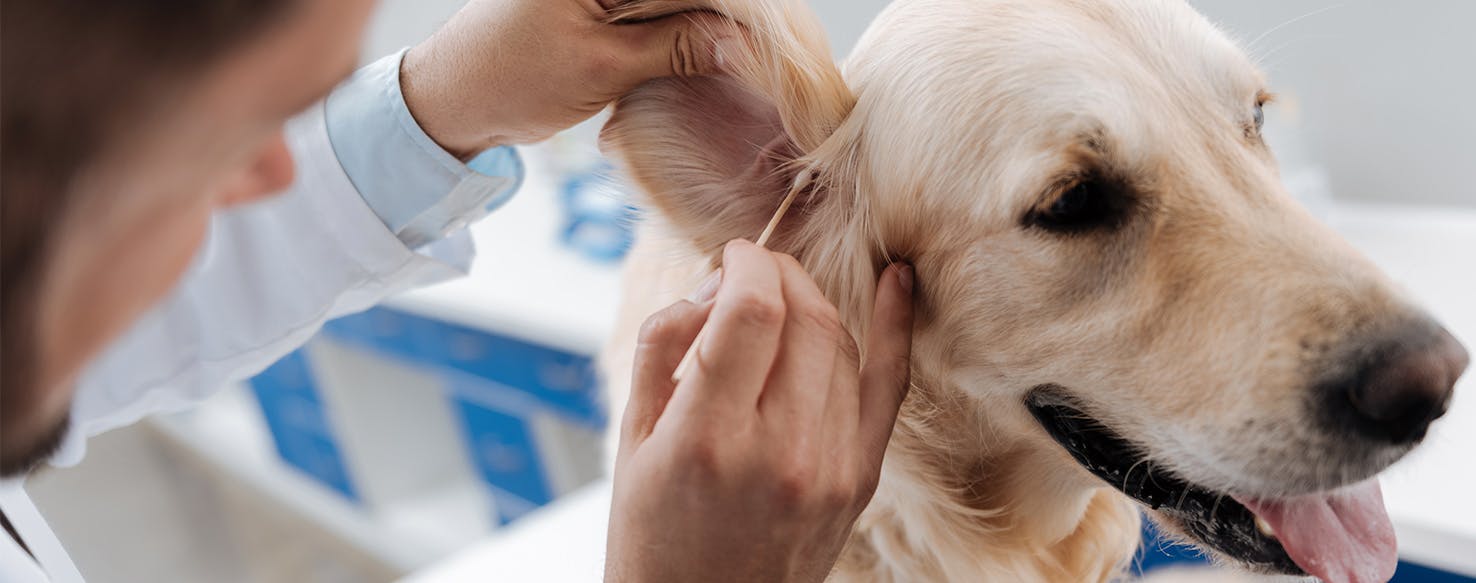Ear infections and wax build up in your dog’s ears can be quite common, and when it occurs, topical ear medication needs to be administered to combat yeasts, bacteria, and wax buildup. Dogs with long floppy ears and dogs in humid conditions, are especially subject to fungal infections, which can become chronic and require frequent treatment.
Because their ears can be sore when infected with yeasts and bacteria, and if they have had negative experiences with having ear medications applied before, some dogs can become quite resistant to having topical ear medications instilled, making the job of providing medication quite difficult. There are steps pet owners can take to make application of ear medication easier for themselves and their dogs, and to ensure their dog gets the appropriate dose to resolve their ear condition. Read on for more information on administration of ear medications.
Prepare your dog's medication
Prior to administering ear medication, make sure you read all instructions so you understand the appropriate dose, schedule, handling, and storage of the prescription. Some ear medications require refrigeration. If this is the case, warming up the individual dosage of medication in an applicator in a warm water bath prior to administering, or warming it in your hand, may make administration less unpleasant. Do not microwave medications as radiation can interfere with the medicine’s effectiveness.
If your dog's ear is especially painful, and your pup reacts aggressively to interference with their ear, you may need to consider muzzling them for the procedure.
Take the administration of medication step by step
- Wash your hands before administering ear medication.
- You may be required to gently clean the ear prior to medication installation, to ensure that medicine comes in contact with the ear surface and wax buildup or yeast debris does not interfere.
- Once the ear surface is prepared, draw the solution into the dropper with your dominant hand or hold the squeeze bottle in your dominant hand.
- With your non-dominant hand, pull back the ear flap to expose the ear canal.
- If your dog struggles, you can back them up against a wall or a piece of furniture, or engage an assistant to hold them. Small dogs can be wrapped a towel.
- Hold the applicator above the ear canal and do not insert it in the ear canal. Be careful, if your pup is struggling, not to touch the applicator to the ear as this contaminates the applicator, and can cause injury to the delicate structures of the ear canal.
- Drop the required dose of ear medication into the ear canal by squeezing the bottle or dropper with the ear flap pulled away.
- Gently rub in a circular motion at the base of the ear canal, to distribute the medication.
- Once the solution has been distributed and has a chance to settle in the ear canal, you can release your dog. They may shake their head. Some debris and medication may come out of the ear at this point, and can be wiped away with a clean cloth or a cotton ball.
- Give your dog a treat, so they associate the ear medication procedure with a positive outcome.
- Repeat with the other ear if required.
- Wash hands after ear medication is instilled.
- Try to discourage your dog from scratching or interfering with the ear between medications as this can make infection and irritation worse.
Getting comfortable with the procedure
If your dog is especially resistant, and goes running every time the ear medication bottle comes out, try holding the bottle and petting them, multiple times a day, or holding the bottle and giving them treats when you're not delivering medication, so your dog gets used to the applicator and it does not cause a flight response. Manipulate the ear, and give your dog treats, many times a day when you are not administering medicine, to desensitize your dog to having their ear handled. Be careful not to tense up when actually administering the medication, as this can cause your dog to struggle or be uncooperative.
Make it positive for everyone
Ear medication administration does not have to be a chore. With a little bit of patience and rewarding for good behavior, your dog will come to associate the ear medicine with a positive experience and cooperate in the future. Take your time, practice so your technique is smooth, unrushed, and relaxed, and have plenty of treats available. Breaking the process down and providing rewards for cooperation at each step, can be helpful, as can desensitizing your dog to the medication and having the ear handled. Ear infections can be chronic, and medication may need to be repeated in the future, so it is well worth it to establish a positive experience that your dog will not avoid on another similar occasion.


